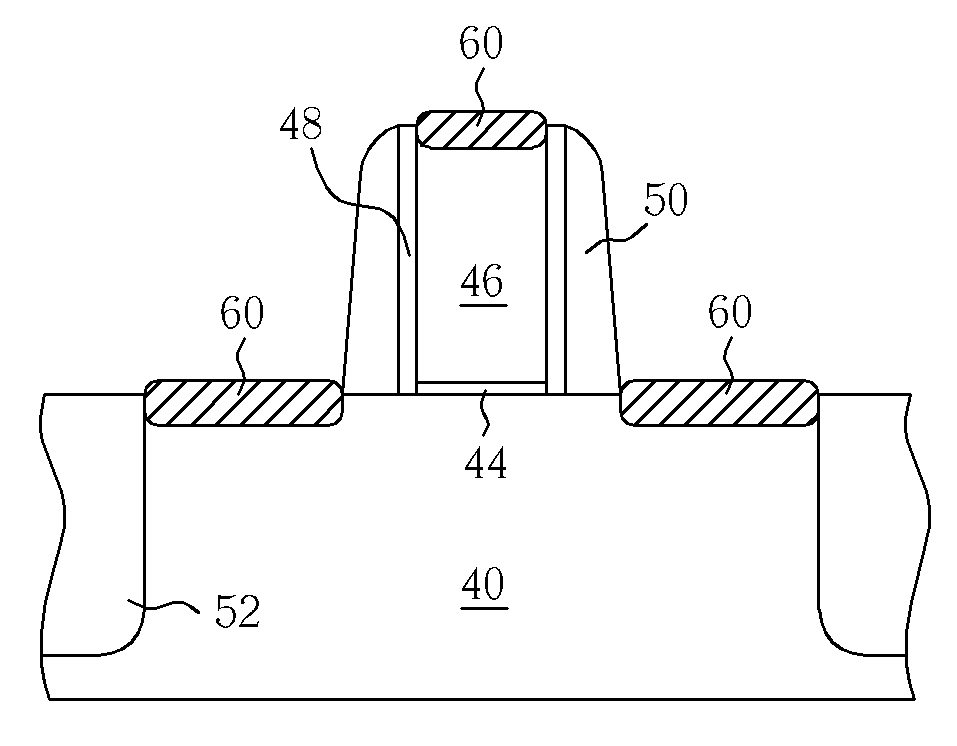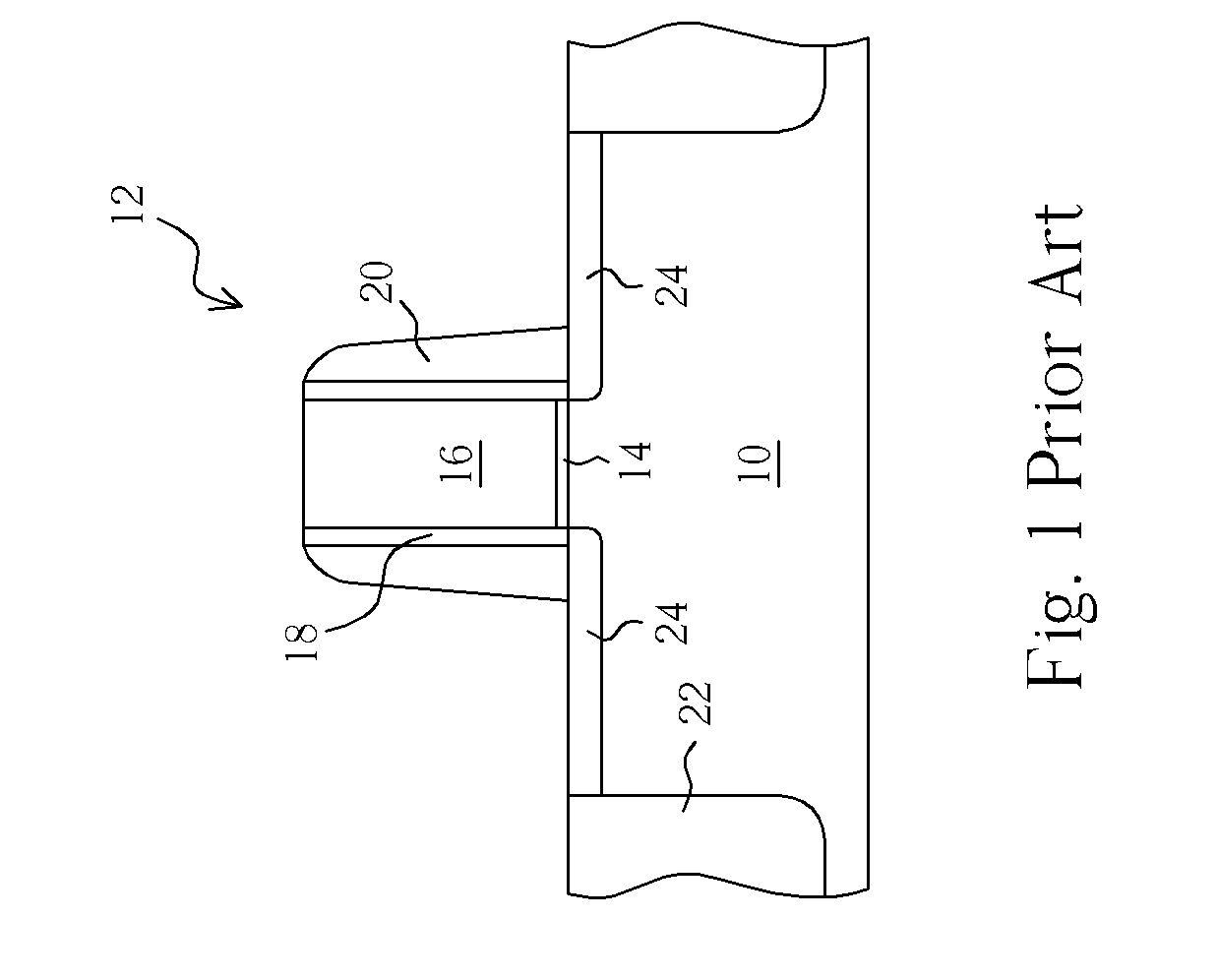Method for fabricating strained-silicon metal-oxide semiconductor transistors
- Summary
- Abstract
- Description
- Claims
- Application Information
AI Technical Summary
Benefits of technology
Problems solved by technology
Method used
Image
Examples
Embodiment Construction
[0021]Please refer to FIGS. 7-10. FIGS. 7-10 illustrate a method of utilizing selective epitaxial growth process for fabricating a strained-silicon metal-oxide semiconductor transistor according to the preferred embodiment of the present invention. As shown in FIG. 7, a semiconductor substrate 40, such as a silicon substrate is first provided. The semiconductor substrate 40 includes a gate structure 42 thereon, in which the gate structure 42 includes a gate dielectric 44 and a gate 46 disposed on the gate dielectric 44. An ion implantation process is performed thereafter to inject a p-type or n-type dopant of smaller concentration into the semiconductor substrate 40. The implantation process preferably forms a lightly doped drain 54 in the semiconductor substrate 40 surrounding the gate structure 42. An offset spacer 48 is formed on the sidewall of the gate structure 42 and a spacer 50 is formed around the offset spacer 48 thereafter. Preferably, the gate dielectric 44 is composed i...
PUM
 Login to View More
Login to View More Abstract
Description
Claims
Application Information
 Login to View More
Login to View More - R&D
- Intellectual Property
- Life Sciences
- Materials
- Tech Scout
- Unparalleled Data Quality
- Higher Quality Content
- 60% Fewer Hallucinations
Browse by: Latest US Patents, China's latest patents, Technical Efficacy Thesaurus, Application Domain, Technology Topic, Popular Technical Reports.
© 2025 PatSnap. All rights reserved.Legal|Privacy policy|Modern Slavery Act Transparency Statement|Sitemap|About US| Contact US: help@patsnap.com



